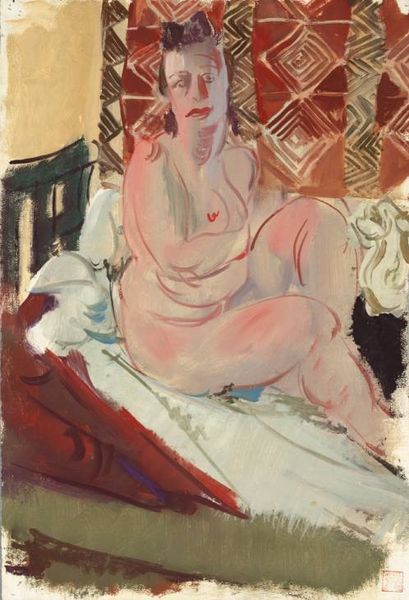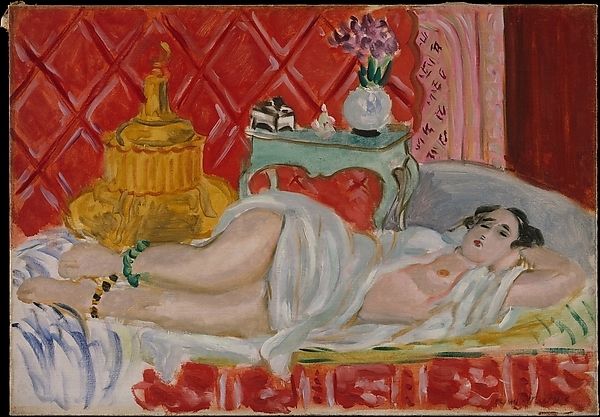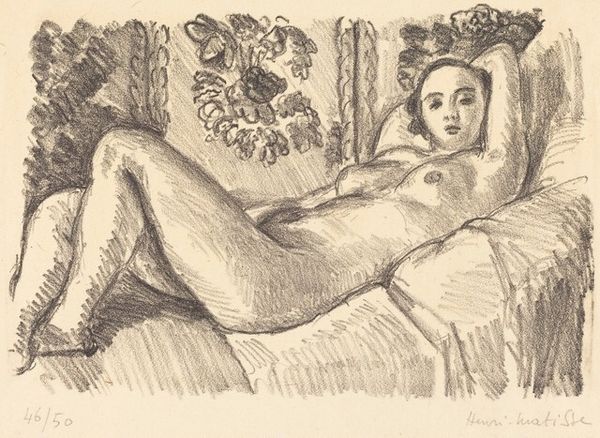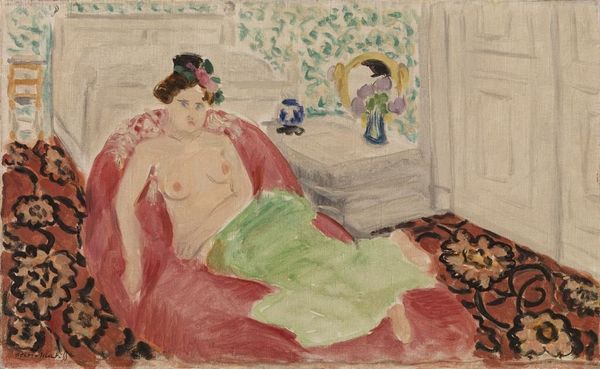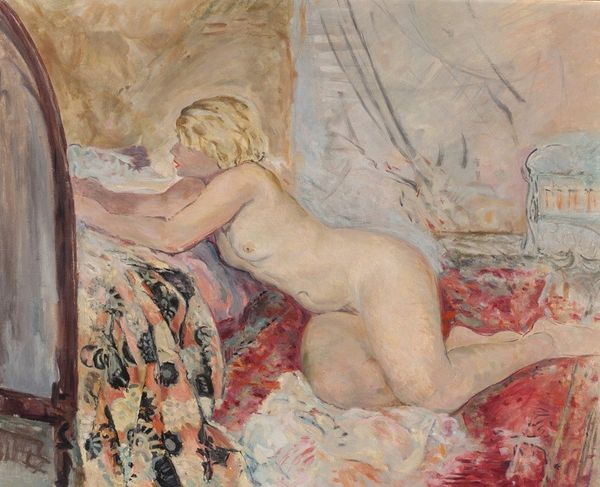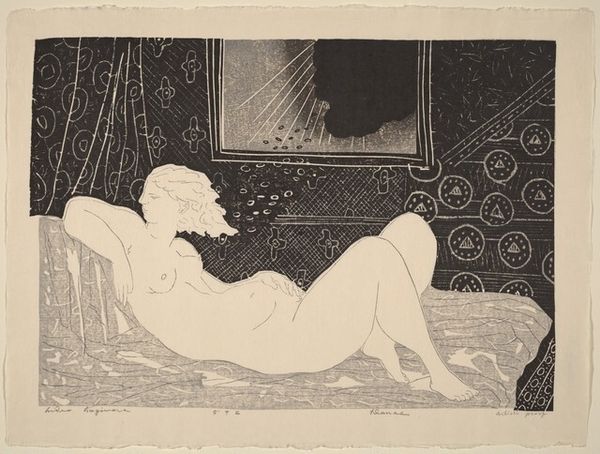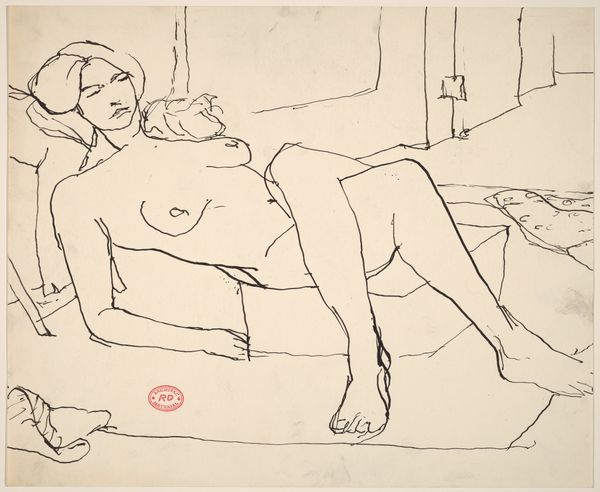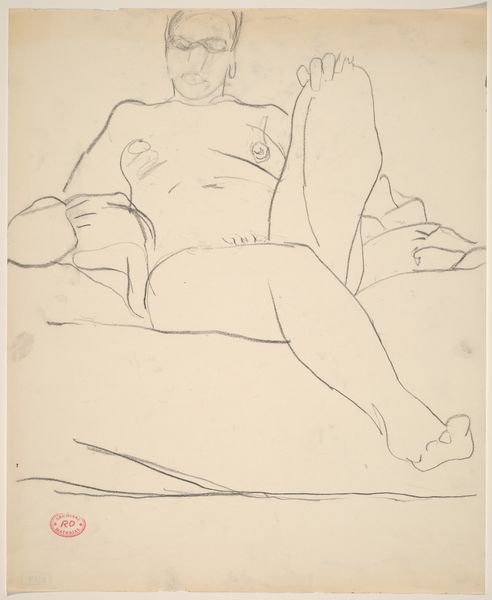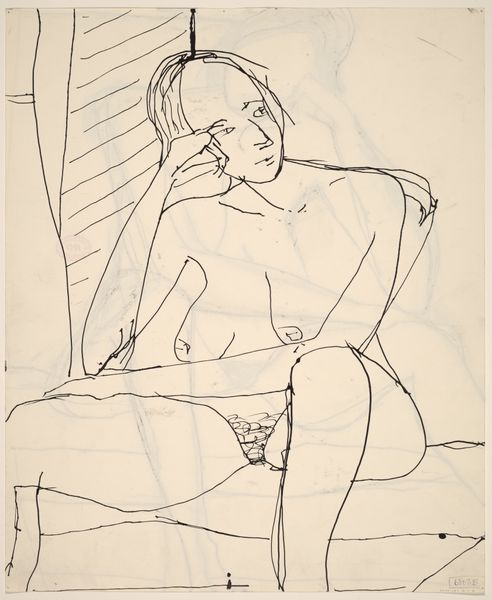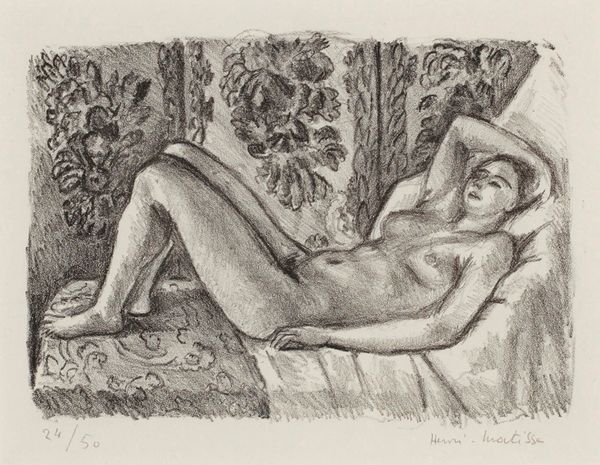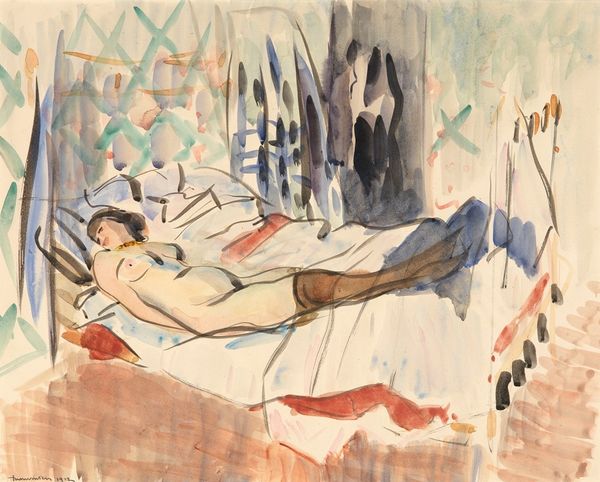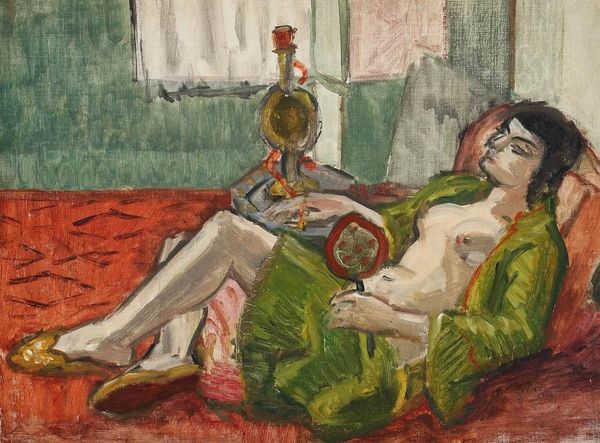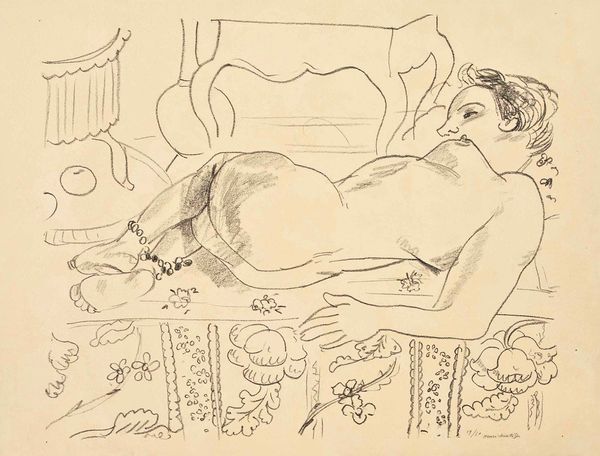
Copyright: Public domain US
Henri Matisse made this sketch of a nude on a chaise longue, using pencil and watercolor, sometime in the first half of the 20th century. Matisse was preoccupied with how academic training shaped our perception of the human body, and how it constrained artistic creativity. In France, where he worked, the nude had been a central motif for centuries, with the traditions of painting upheld by institutions like the École des Beaux-Arts. These dictated that the nude form should be idealised, polished, and graceful. Here, though, Matisse ignores all that. He’s more interested in the directness of the pose and its capacity to create expression. The figure dominates the decorative setting. It's hard to know if Matisse’s intention here was to subvert artistic conventions, but his casual and economical style clearly resists the formal art establishment. As historians, we can refer to exhibition catalogues, critical reviews, and artists’ statements to understand the social and institutional contexts that shaped Matisse’s work. This helps us interpret the meaning of his art.
Comments
No comments
Be the first to comment and join the conversation on the ultimate creative platform.
